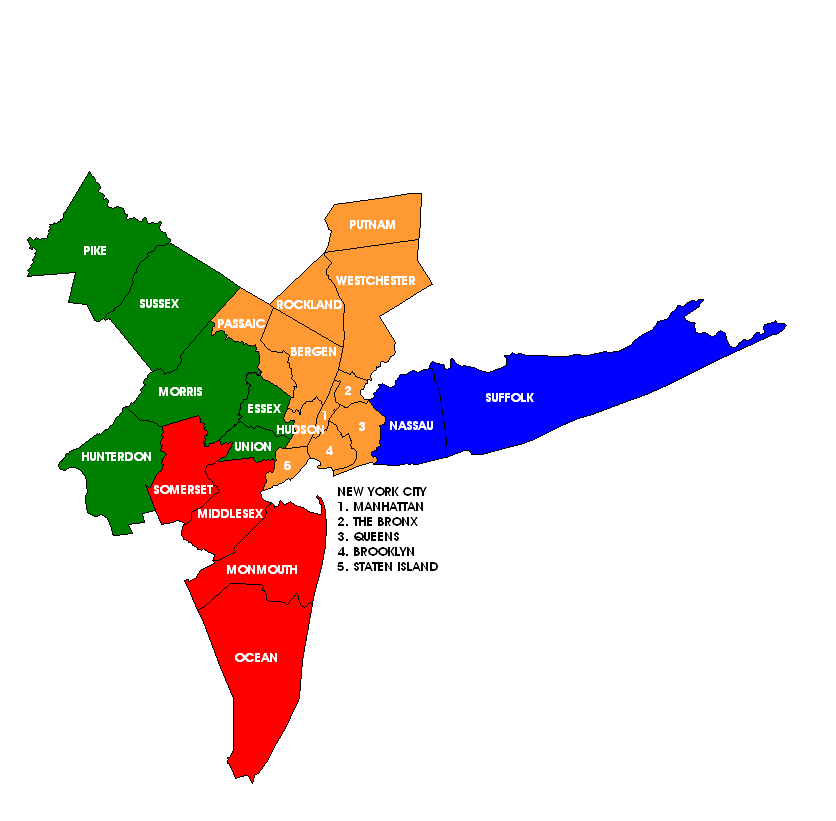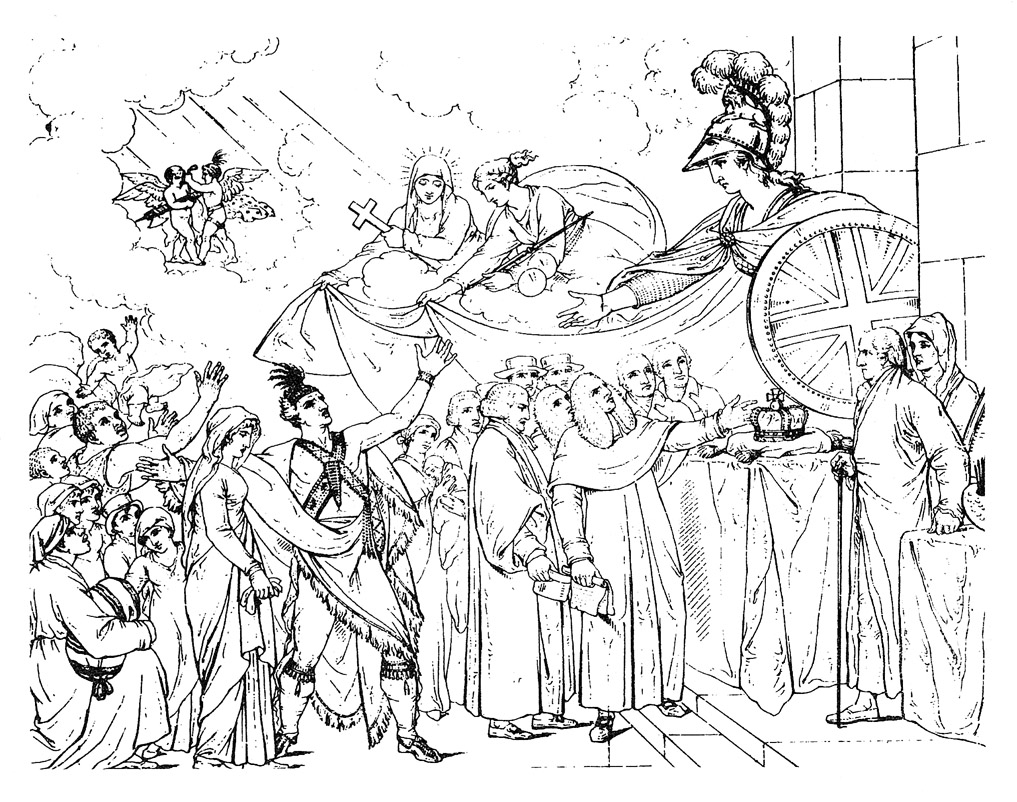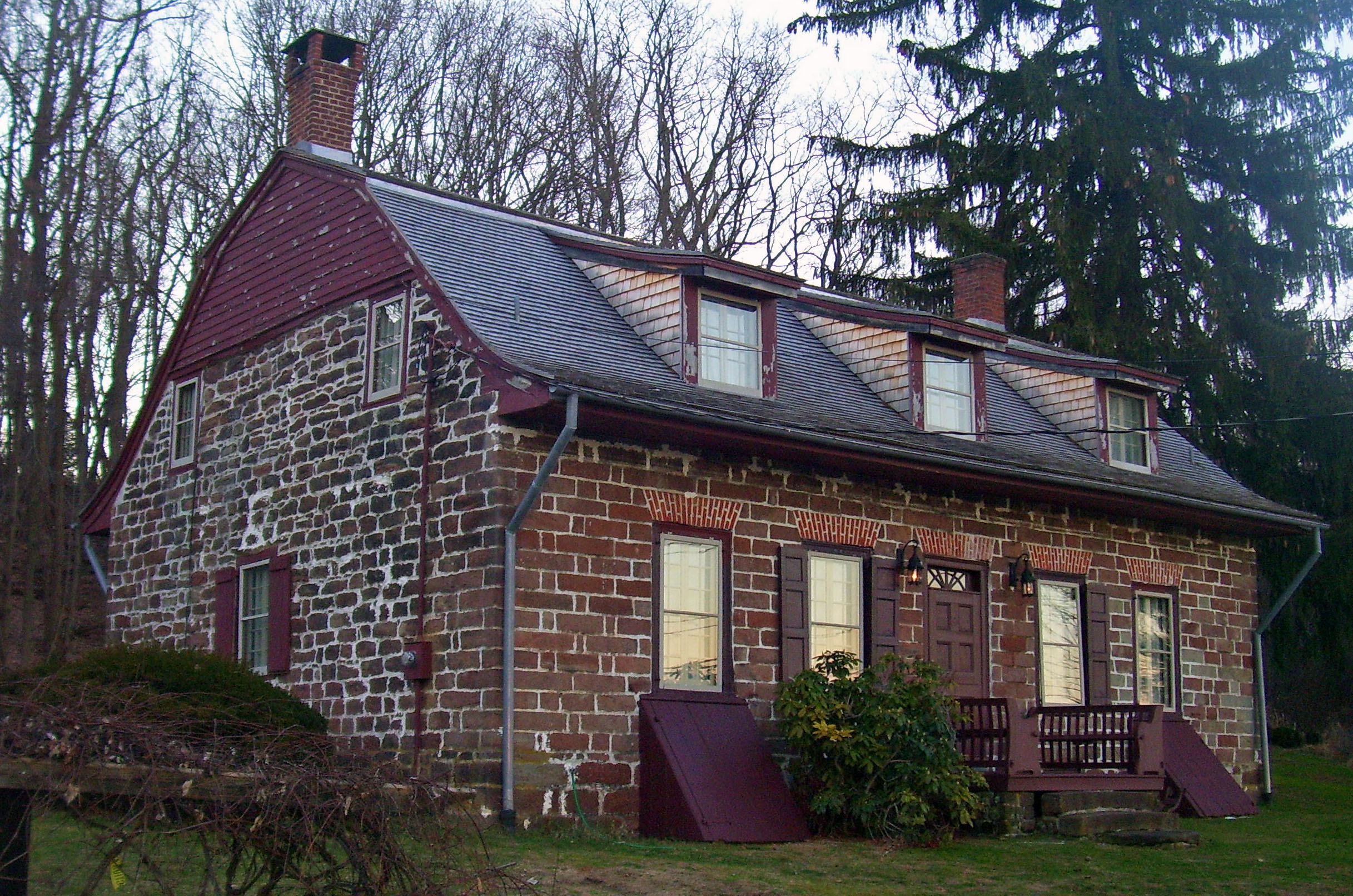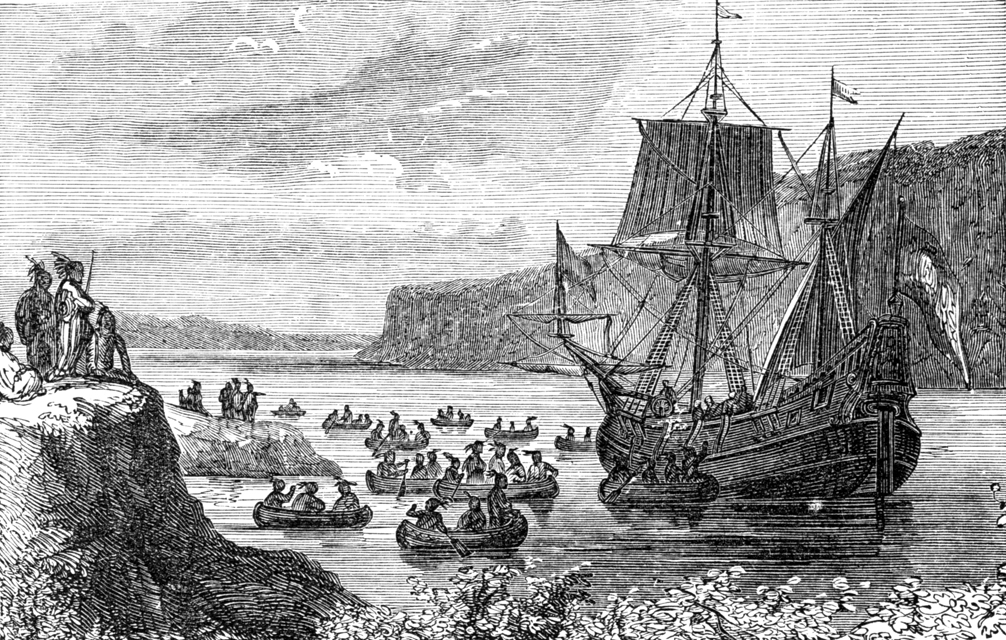 |
Goshen (village), New York
Goshen is a village in and the county seat of Orange County, New York, United States. The population was 5,777 at the 2020 census. It is part of the Poughkeepsie–Newburgh–Middletown metropolitan area as well as the larger New York metropolitan area. The village is within the town of Goshen, some fifty miles northwest of New York City, on New York State Route 17 in the center of Orange County. Goshen is the home of the Harness Racing Museum & Hall of Fame, and hosted harness racing's top event, the Hambletonian, from 1930 to 1956, at the former Good Time Park. Racing is still held at the Historic Track, a National Historic Landmark in the center of the village. History The village was settled in 1714 and incorporated in 1809. In 1727 it was declared the "half-shire town" of Orange County, a predecessor to its current status as county seat. It did not take on that full status, however, until Rockland County was split from the county in 1798, and Goshen was designated the s ... [...More Info...] [...Related Items...] OR: [Wikipedia] [Google] [Baidu] |
 |
Administrative Divisions Of New York
The administrative divisions of New York are the various units of government that provide local government, local services in the New York (state), State of New York. The state is divided into boroughs of New York City, boroughs, counties, cities, civil township, townships called "towns", and villages. (The only boroughs, the five boroughs of New York City, have the same boundaries as their respective counties.) They are municipal corporations, chartered (created) by the New York State Legislature, as under the New York Constitution the only body that can create governmental units is the state. All of them have their own governments, sometimes with no paid employees, that provide local services. Centers of population that are not incorporated and have no government or local services are designated Hamlet (place)#New York, hamlets. Whether a municipality is defined as a borough, city, town, or village is determined not by population or land area, but rather on the form of gover ... [...More Info...] [...Related Items...] OR: [Wikipedia] [Google] [Baidu] |
 |
New York Metropolitan Area
The New York metropolitan area, also commonly referred to as the Tri-State area, is the largest metropolitan area in the world by urban landmass, at , and one of the most populous urban agglomerations in the world. The vast metropolitan area includes New York City, Long Island, the Mid and Lower Hudson Valley in the State of New York; the six largest cities in New Jersey: Newark, Jersey City, Paterson, Elizabeth, Lakewood, and Edison, and their vicinities; and six of the seven largest cities in Connecticut: Bridgeport, Stamford, New Haven, Waterbury, Norwalk, and Danbury, and the vicinities of these cities. The New York metropolitan area comprises the geographic and demographic hub of the larger Northeast megalopolis. The New York metropolitan area is the most populous in the United States, as defined by both the Metropolitan Statistical Area (20.1 million residents in 2020) and the Combined Statistical Area (23.6 million residents in 2020). The metropoli ... [...More Info...] [...Related Items...] OR: [Wikipedia] [Google] [Baidu] |
 |
Loyalist (American Revolution)
Loyalists were colonists in the Thirteen Colonies who remained loyal to the British Crown during the American Revolutionary War, often referred to as Tories, Royalists or King's Men at the time. They were opposed by the Patriots, who supported the revolution, and called them "persons inimical to the liberties of America." Prominent Loyalists repeatedly assured the British government that many thousands of them would spring to arms and fight for the crown. The British government acted in expectation of that, especially in the southern campaigns in 1780–81. Britain was able to effectively protect the people only in areas where they had military control, and in return, the number of military Loyalists was significantly lower than what had been expected. Due to the conflicting political views, loyalists were often under suspicion of those in the British military, who did not know whom they could fully trust in such a conflicted situation; they were often looked down upon. Pat ... [...More Info...] [...Related Items...] OR: [Wikipedia] [Google] [Baidu] |
|
Claudius Smith
Claudius Smith (1736 – January 22, 1779) was a Loyalist guerrilla leader during the American Revolution. He led a band of irregulars who were known locally as the 'cowboys'. Claudius was the eldest son of David Smith (1701–1787), a respected tailor, cattleman, miller, constable, clergyman, and finally judge in Brookhaven, New York. His mother was Meriam (Williams) Carle, a daughter of Samuel Williams of Hempstead, New York. David Smith was the son of a Samuel Smith, but the identity of this Samuel is not certain. Claudius as a guerrilla leader During the Revolutionary War, Claudius, along with several members of his family, including three of his four sons (William, Richard, and James), allegedly terrorized the New York countryside in an area formerly known as Smith's Clove (presently Monroe), Orange County, New York, where David Smith and his family had moved about 1741 from Brookhaven. Accounts differ on Claudius Smith's size and stature. A 1762 French and Indian War mu ... [...More Info...] [...Related Items...] OR: [Wikipedia] [Google] [Baidu] |
|
.png) |
The Wallkill Valley In Art And Story (1899) (14589849988)
''The'' () is a grammatical article in English, denoting persons or things that are already or about to be mentioned, under discussion, implied or otherwise presumed familiar to listeners, readers, or speakers. It is the definite article in English. ''The'' is the most frequently used word in the English language; studies and analyses of texts have found it to account for seven percent of all printed English-language words. It is derived from gendered articles in Old English which combined in Middle English and now has a single form used with nouns of any gender. The word can be used with both singular and plural nouns, and with a noun that starts with any letter. This is different from many other languages, which have different forms of the definite article for different genders or numbers. Pronunciation In most dialects, "the" is pronounced as (with the voiced dental fricative followed by a schwa) when followed by a consonant sound, and as (homophone of the archaic pr ... [...More Info...] [...Related Items...] OR: [Wikipedia] [Google] [Baidu] |
 |
Newburgh (city), New York
Newburgh is a city in the U.S. state of New York, within Orange County. With a population of 28,856 as of the 2020 census, it is a principal city of the Poughkeepsie–Newburgh–Middletown metropolitan area. Located north of New York City, and south of Albany on the Hudson River within the Hudson Valley Area, the city of Newburgh is located near Stewart International Airport, one of the primary airports for Downstate New York. The Newburgh area was first settled in the early 18th century by the Germans and British. During the American Revolution, Newburgh served as the headquarters of the Continental Army. Prior to its chartering in 1865, the city of Newburgh was part of the town of Newburgh; the town now borders the city to the north and west. East of the city is the Hudson River; the city of Beacon is across the river and it is connected to Newburgh via the Newburgh–Beacon Bridge. The entire southern boundary of the city is with the town of New Windsor. Most of ... [...More Info...] [...Related Items...] OR: [Wikipedia] [Google] [Baidu] |
 |
Orangetown, New York
Orangetown is a town in Rockland County, New York, United States, located in the southeastern part of the county. It is northwest of New York City, north of New Jersey, east of the town of Ramapo, south of the town of Clarkstown, and west of the Hudson River. The population was 49,212 at the 2010 census. History Orangetown was first settled around 1680. The first settlers were Dutch men who purchased a tract of land from the Tappan Indians in 1686; their patent of the same year called the place Orange, but it was also known as Orangetown and Tappan (after the first village). When the state's first twelve counties were established in 1683, the territory that would become Orangetown lay within Orange County. It became part of Rockland County when that county was created in 1798. ''Historical material'' from the Gazetteer of New York, 1860 & 1861: ORANGETOWN—was formed March 7, 1788, and was named from Orange co., of which it then formed a part. It lies upon the Hudson, in ... [...More Info...] [...Related Items...] OR: [Wikipedia] [Google] [Baidu] |
 |
Rockland County, New York
Rockland County is the southernmost county on the west side of the Hudson River in the U.S. state of New York. It is part of the New York metropolitan area. It is about from the Bronx at their closest points. The county's population, as of the 2020 United States Census, is 338,329, making it the state's third-most densely populated county outside New York City (after Nassau and neighboring Westchester Counties, respectively). The county seat is New City. Rockland County is accessible via the New York State Thruway, which crosses the Hudson to Westchester at the Tappan Zee Bridge ten exits up from the NYC border, as well as the Palisades Parkway five exits up from the George Washington Bridge. The county's name derives from "rocky land", as the area has been aptly described, largely due to the Hudson River Palisades. This county is home to one of the most prominent towns in American history. Congers, NY is home to the stepping grounds of Commander-In-Chief George Washingto ... [...More Info...] [...Related Items...] OR: [Wikipedia] [Google] [Baidu] |
 |
National Historic Landmark
A National Historic Landmark (NHL) is a building, district, object, site, or structure that is officially recognized by the United States government for its outstanding historical significance. Only some 2,500 (~3%) of over 90,000 places listed on the country's National Register of Historic Places are recognized as National Historic Landmarks. A National Historic Landmark District may include contributing properties that are buildings, structures, sites or objects, and it may include non-contributing properties. Contributing properties may or may not also be separately listed. Creation of the program Prior to 1935, efforts to preserve cultural heritage of national importance were made by piecemeal efforts of the United States Congress. In 1935, Congress passed the Historic Sites Act, which authorized the Interior Secretary authority to formally record and organize historic properties, and to designate properties as having "national historical significance", and gave the Nati ... [...More Info...] [...Related Items...] OR: [Wikipedia] [Google] [Baidu] |
|
Good Time Park
Good Time Park was a mile-long race track in Goshen, New York that hosted the Hambletonian harness race from 1930 to 1956. History A largely unmaintained field for the first century of its existence, the area that would become Good Time Park was originally called Fiddler's Green. At the beginning of the 19th century, it was a common meeting place for local races, training, and breeding. Use died out around 1820, and it was largely forgotten until 1899, when it was refurbished to be used to train trotters. Sports promoter and horse owner William H. Cane bought the land in 1926, named the new track Good Time Park, and began to hold races there. By 1927, it had become a Grand Circuit track, with a large stables and a 2,224-seat grandstand. The first Hambletonian in Goshen was held on August 27, 1930, and was broadcast on the radio by the Columbia Broadcasting System. The victory purse of $58,859.00 was won, after three heats, by Tom Berry driving Hanover's Bertha Hanover's Ber ... [...More Info...] [...Related Items...] OR: [Wikipedia] [Google] [Baidu] |
|
|
Hambletonian Stakes
The Hambletonian Stakes is a major American harness race for three-year-old trotting horses, named in honor of Hambletonian 10, a foundation sire of the Standardbred horse breed, also known as the "Father of the American Trotter." The first in the Triple Crown of Harness Racing for Trotters, the Hambletonian is currently held at the Meadowlands Racetrack in East Rutherford, New Jersey, on the first Saturday in August. Sites The Hambletonian first took place at the New York State Fair in Syracuse in 1926. The race switched from Syracuse to Lexington, Kentucky for the 1927 and 1929 races, however, because of rainouts. Starting in 1930, Good Time Park in Goshen, New York hosted the race until 1956 with the exception of 1943. That year, The Hambletonian was raced at Empire City Race Track, which became Yonkers Raceway in 1950, because of wartime gas rationing. The Du Quoin State Fair in Du Quoin, Illinois gained the rights to host the race in 1957 and held on to it until 1980. ... [...More Info...] [...Related Items...] OR: [Wikipedia] [Google] [Baidu] |